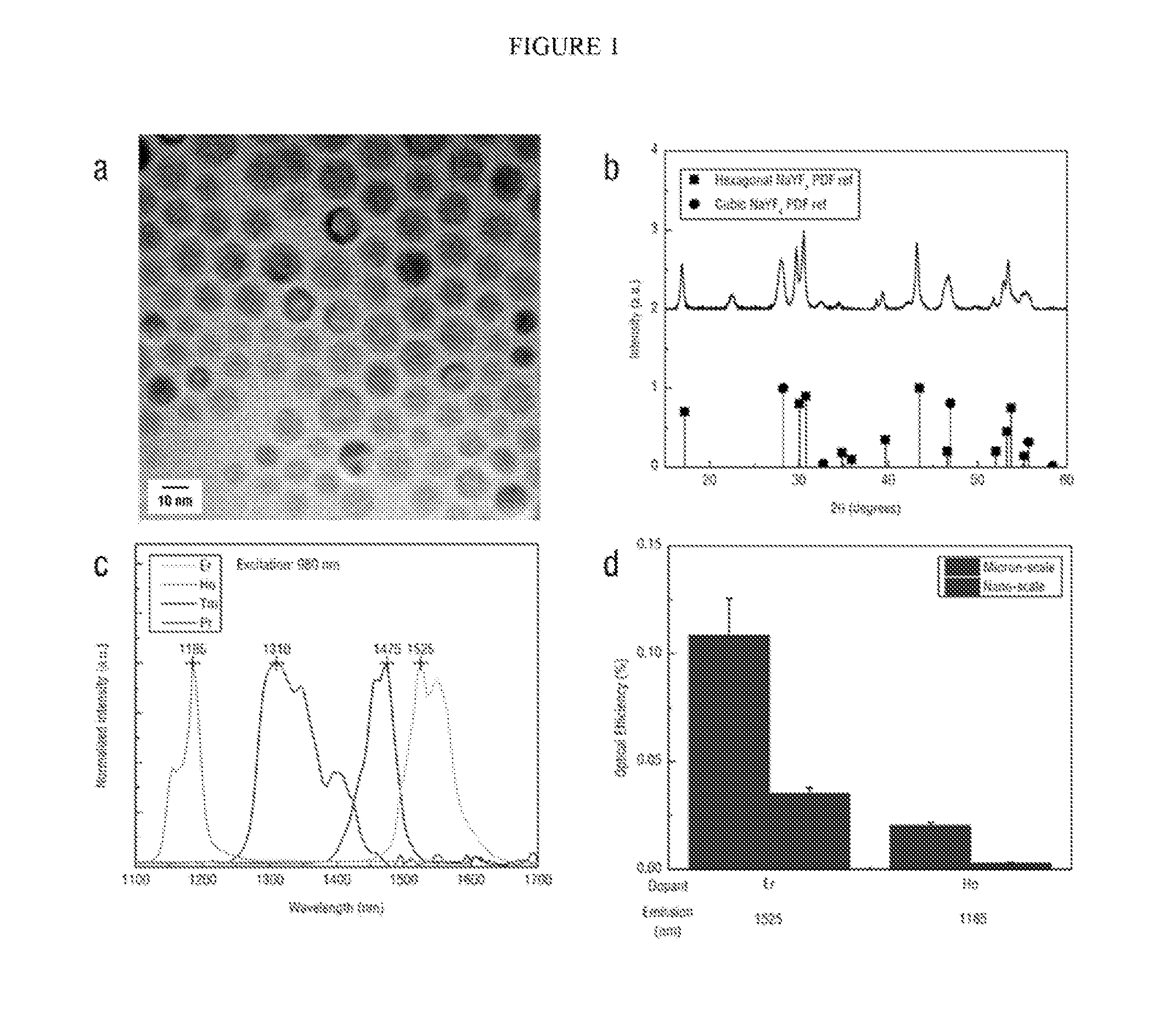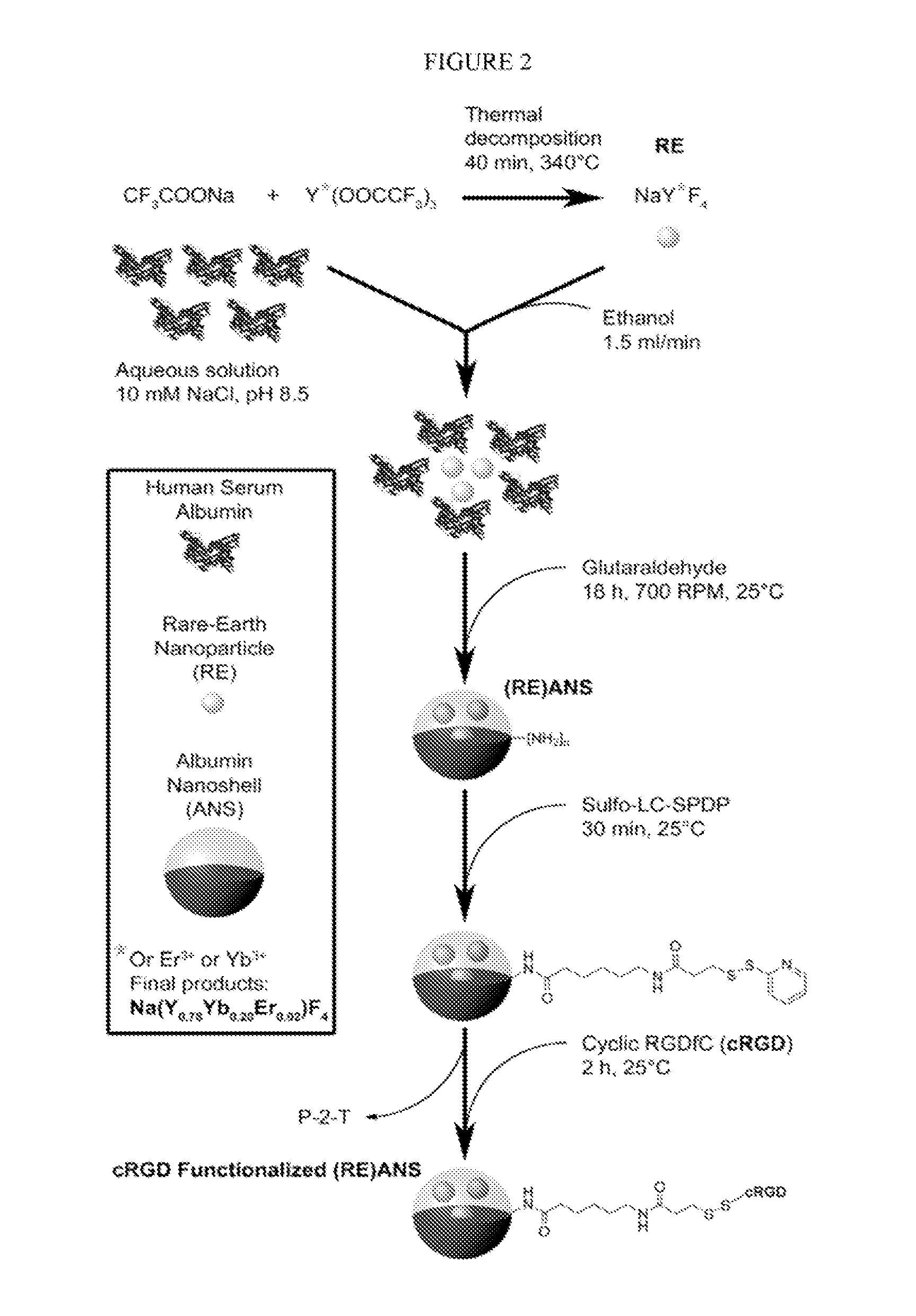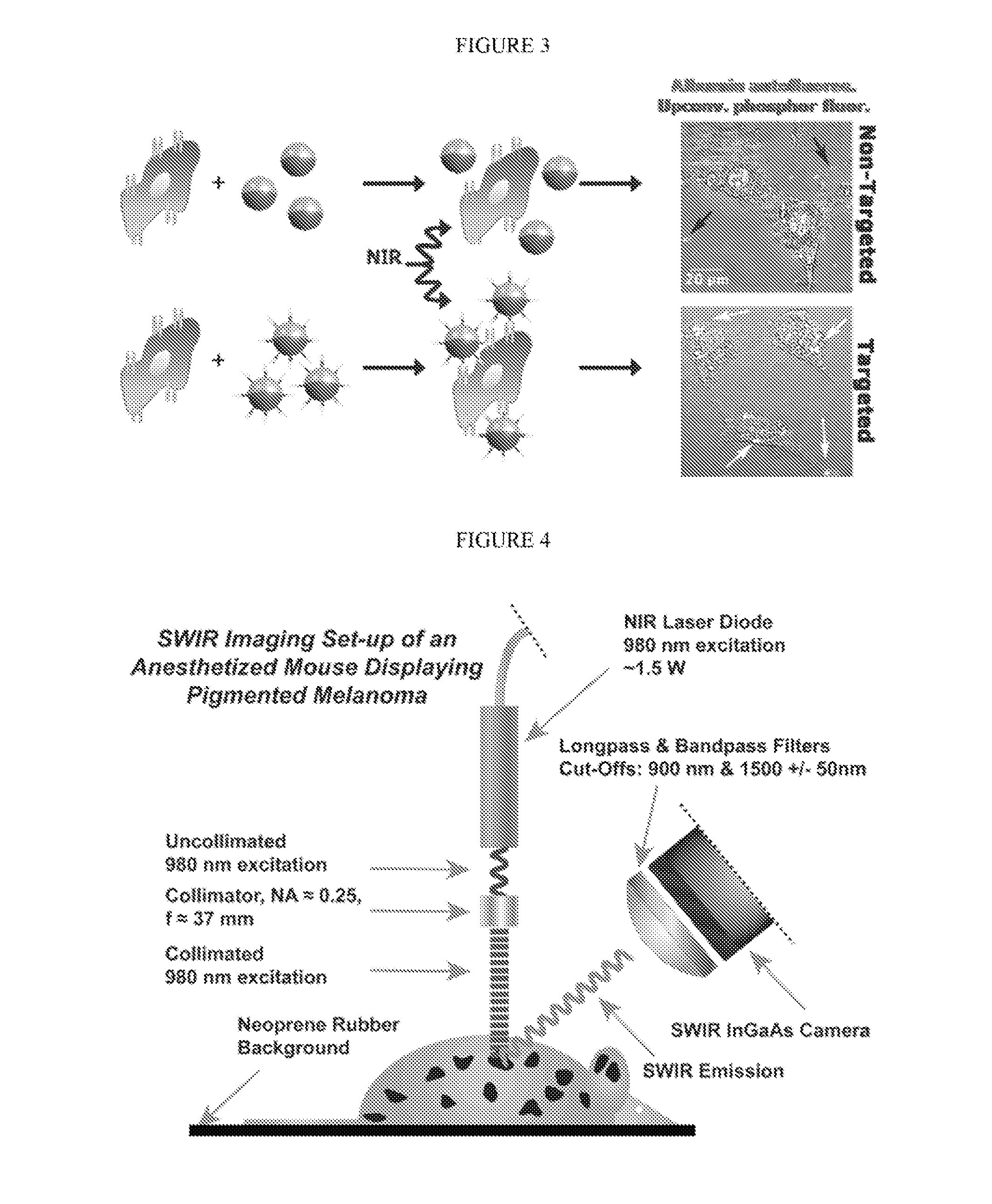Multifunctional infrared-emitting composites
a composite and infrared-emitting technology, applied in the field of multifunctional infraredemitting composites, can solve the problems of limited use of visible-light excitable fluorophores, and achieve the effect of reducing the cytotoxicity of res and high-utility luminescen
- Summary
- Abstract
- Description
- Claims
- Application Information
AI Technical Summary
Benefits of technology
Problems solved by technology
Method used
Image
Examples
example 1
Small Animal SWIR-Imaging System Using NIR Excitation
[0094]A prototype of a small animal SWIR-imaging system was designed and built to demonstrate of the utility of our composites for non-invasive SWIR imaging. The in-house SWIR-imaging prototype consists of a fiber-coupled NIR laser photodiode which operates at 980 nm and 1.4-1.5 W, and a thermoelectric-cooled Indium Gallium Arsenide (InGaAs) SWIR camera with a detection range from 800 to 1700 nm (see FIG. 4). FIG. 4 shows a SWIR imaging set-up of an anesthetized mouse displaying pigmented melanoma following (RE)ANS injection. Excitation of the mouse was performed using a 980 nm laser diode equipped with a collimator operating at approximately 1.4-1.5 W. Emission was captured using a SWIR InGaAs camera equipped with two sets of filters (longpass-900 nm and bandpass-1500 nm + / −50 nm) to ensure the elimination of the excitation light from the captured images. Black Neoprene rubber was used as the background for the mouse to rest on i...
example 2
Detection of NIR-to-SWIR Fluorescence In Vivo
[0096]Variously sized (RE)ANS were introduced through intraperitoneal and intravenous administration into rodent models. The nanoparticles were imaged using an SWIR camera to capture the SWIR emission of the particles following their fluorescent excitation at 980 nm. The SWIR emission around 1500 nm of the REs following NIR excitation was confirmed for the ANS-encapsulated composites of the RE's (FIG. 5). This is consistent with the previous reports that, in addition to the traditional “optical imaging window” of NIR between 650 to 950 nm, there lies another second “window” in the SWIR region of the spectrum between 1000 to 1700 nm mimicking the improved signal-to-noise ratios for seen in traditional NIR imaging.
[0097]In order to examine the biodistribution of the (RE)ANS, a melanoma model was used. These mice develop melanoma spontaneously around the ears, snout and anus followed by lesions on their skin and metastases in their lymph nod...
example 3
Demonstration of Superiority of Biodistribution of RE-Composites Over Naked RE's
[0100]Striking differences in biodistribution following IP injection of REs or (RE)ANS (FIG. 7) were observed. While the (RE)ANS in the peritoneal cavity progressively diminish from the site of injection over time, accumulating and clearing from different organs and tumors, uncoated RE particles do not distribute from the site of injection even after 7 days. After dissecting the animal most of the uncoated REs were found to be located in the IP cavity sac, a highly vascularized structure lining the abdomen and known to be the first point of entry into the blood stream of compounds introduced via IP injection (FIG. 8). This confirms that albumin encapsulation facilitates the absorption of the coated RE particles into the bloodstream, enabling improved biodistribution compared to the REs alone.
[0101]FIG. 7 shows pictures of mice exhibiting melanoma lesions injected with 100 μl of REs and (RE)ANS (2.0 mg RE...
PUM
| Property | Measurement | Unit |
|---|---|---|
| visible wavelength radiation | aaaaa | aaaaa |
| visible wavelength radiation | aaaaa | aaaaa |
| visible wavelength radiation | aaaaa | aaaaa |
Abstract
Description
Claims
Application Information
 Login to View More
Login to View More - R&D
- Intellectual Property
- Life Sciences
- Materials
- Tech Scout
- Unparalleled Data Quality
- Higher Quality Content
- 60% Fewer Hallucinations
Browse by: Latest US Patents, China's latest patents, Technical Efficacy Thesaurus, Application Domain, Technology Topic, Popular Technical Reports.
© 2025 PatSnap. All rights reserved.Legal|Privacy policy|Modern Slavery Act Transparency Statement|Sitemap|About US| Contact US: help@patsnap.com



